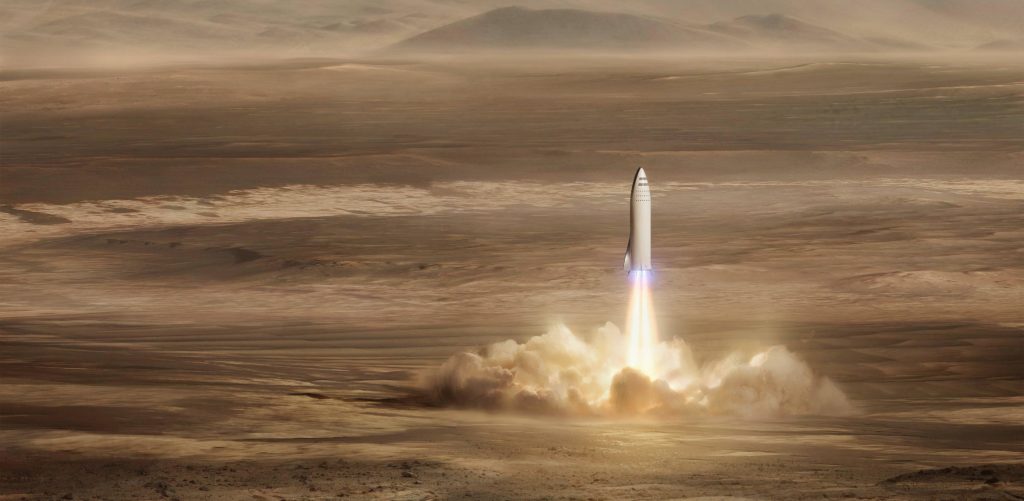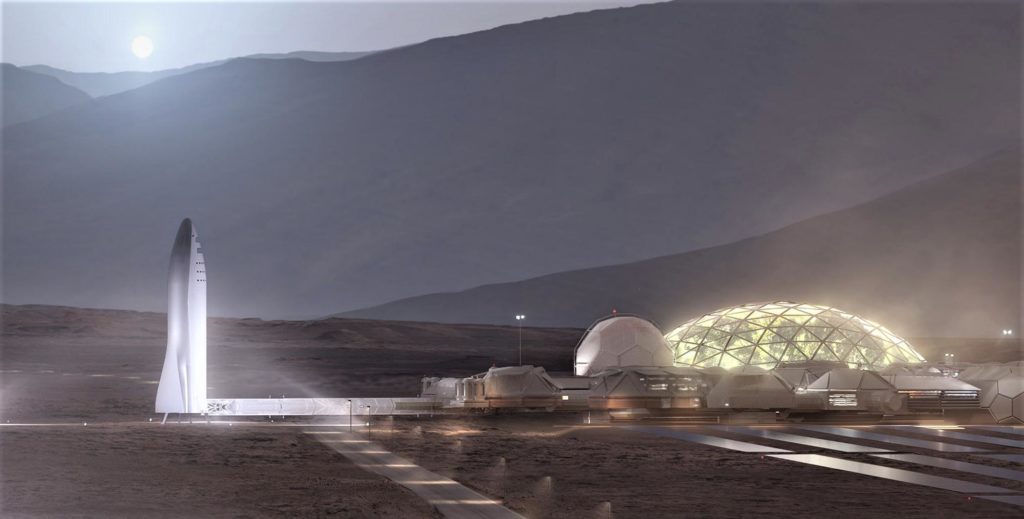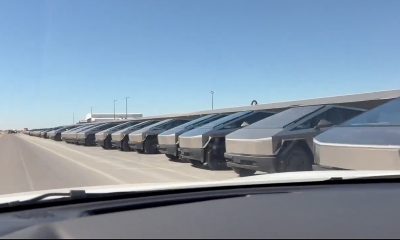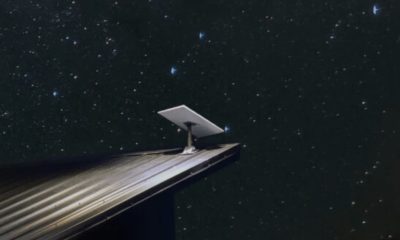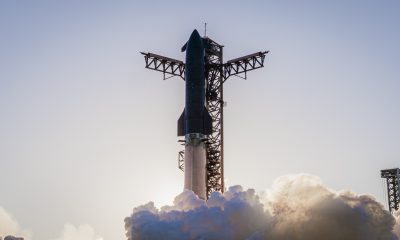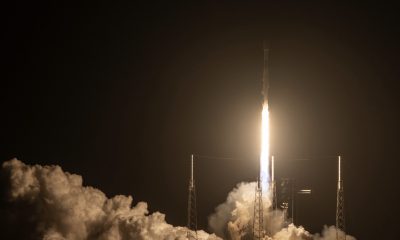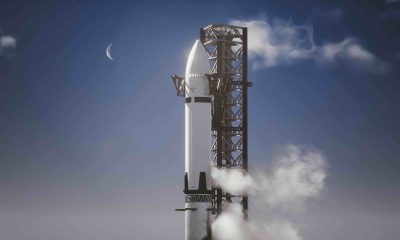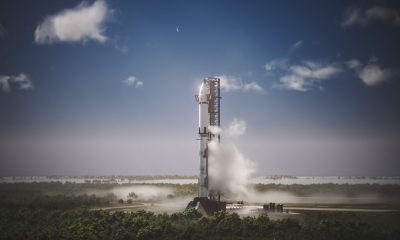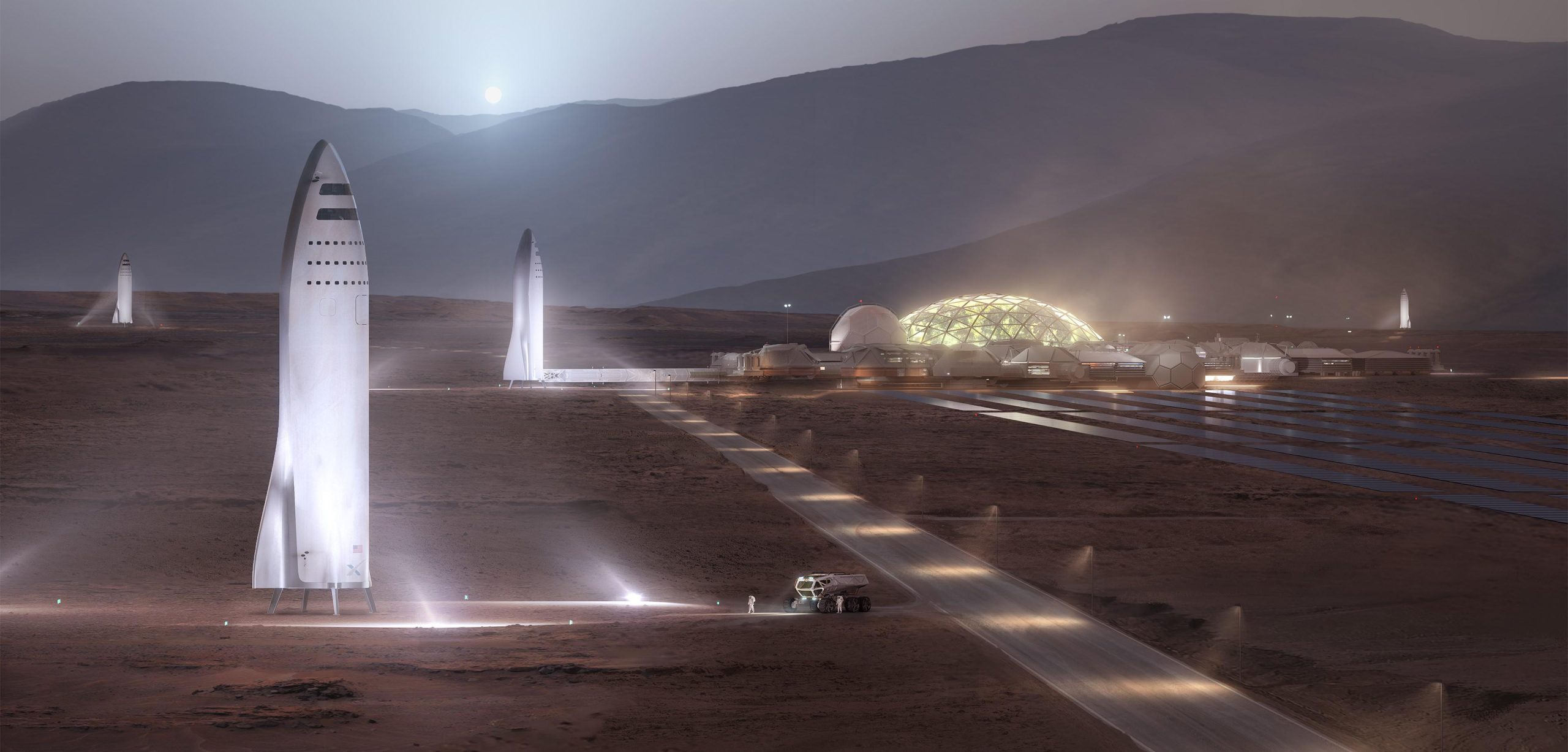
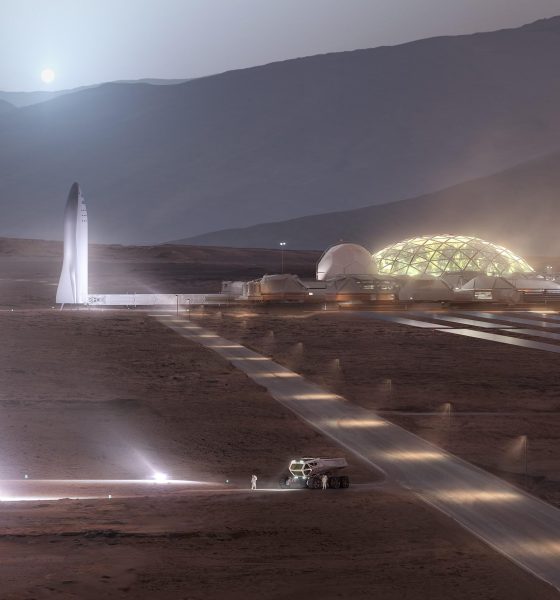
News
SpaceX wants to use the first Mars-bound BFR spaceships as Martian habitats
Speaking at the 2018 Mars Society Convention, SpaceX’s Principal Mars Development Engineer Paul Wooster briefly presented on the company’s BFR and Mars colony ambitions.
While the majority of the 30-minute talk rehashed CEO Elon Musk’s 2017 BFR update and subsequent Reddit AMA, it also happened to contain a handful of new details and slides, including a suggestion that the first BFR spaceships to land on Mars will stay on the Red Planet as temporary habitats or tools for early colonists.
SpaceX Mars architecture features pic.twitter.com/IHOLCbbvRS
— Maxime Lenormand (@MaxLenormand) August 25, 2018
The senior engineer reiterated the company’s aspirational Martian launch targets, featuring two uncrewed cargo BFRs in 2022 and four total BFRs in 2024, two crewed and two uncrewed. Whether or not the lack of change in those dates (provided by Wooster nearly a year after CEO Elon Musk’s identical date reveal in September 2017) asserts that SpaceX’s BFR and Mars research and development remains on track, it almost certainly confirms that the company’s incredibly aggressive targets are here to stay.
Graciously documented by Reddit users /u/theinternetftw and /u/Nehkara and European Space Agency intern Maxime Lenormand, at least partially alleviating the unbelievably atrocious webcast quality, Wooster offered attendees a slightly deeper glimpse into the extensive in-depth planning going on behind the scenes at SpaceX. Almost all of the new slides Wooster presented focused heavily on the technical side of actually planning to create a self-sustaining Martian colony, ranging from locations for any prospective colony to the types of skillsets that would be exceptionally invaluable in early colonists.
And here are some additional considerations pic.twitter.com/jdVJglfHCG
— Maxime Lenormand (@MaxLenormand) August 25, 2018
At this point, it’s entirely possible that SpaceX’s internal team of Mars-focused engineers and experts has already begun to approach or even surpass the detail and value of previous theoretical Martian colonization research from the likes of NASA, ESA, and other space agencies and companies. Still, SpaceX has made it eminently clear that it wants and likely needs to collaborate with independent experts on Mars, life support systems, construction, resource extraction and refinement, and more.
A private Mars workshop recently hosted by SpaceX – likely the first of many to come – evidenced that desire to collaborate with companies, agencies, and researchers that have already put years of effort into analyzing and answering the same questions SpaceX will need to answer to successfully build a sustainable city on Mars
- A Crew BFS (Big F____ Spaceship) pictured landing on Mars. (SpaceX)
- SpaceX’s Big F____ Spaceship (BFS) pictured near a conceptual Mars base, including a domed common area. (SpaceX)
Perhaps the most interesting detail to come out of Wooster’s August 25th talk, however, was the slight affirmation that SpaceX is seriously thinking about leaving the first landed BFR spaceships on Mars indefinitely, although it’s not entirely clear which spaceships he was referring to. According to paraphrased notes taken from the webcast, early BFR spaceships on the Martian surface would remain there to be used as resources (habitats). He subsequently noted that early colonists would “probably” live out of the first landed spaceships, to begin with, suggesting that the uncrewed, cargo-dedicated spaceships would still return to Earth, as they will not feature human-rated life support systems of any of the necessities for living.
Still, multiple other slides in Wooster’s presentation make it clear that the goal from the very beginning of the first BFRs to Mars is to expand living space and infrastructure as quickly as possible, paving the way for the arrival of more and more colonists. It’s extremely likely that a significant number of skilled colonists will be needed to ensure that the colony remains healthy and safe, while also guaranteeing that it can sustainably grow as rapidly as feasible.
Plans are for sending the first 2 cargos as soon as 2022! pic.twitter.com/A5y3HNpIOx
— Maxime Lenormand (@MaxLenormand) August 25, 2018
Even though it certainly wasn’t the “BFR update” Musk suggested was coming soon, Wooster’s presentation provided the best glimpse yet into the extensive analysis and planning SpaceX is undertaking to discern how exactly to best structure its very first colony-focused launches to Mars.
For prompt updates, on-the-ground perspectives, and unique glimpses of SpaceX’s rocket recovery fleet check out our brand new LaunchPad and LandingZone newsletters!
Elon Musk
Tesla schedules Roadster unveiling event, and you won’t believe when it is
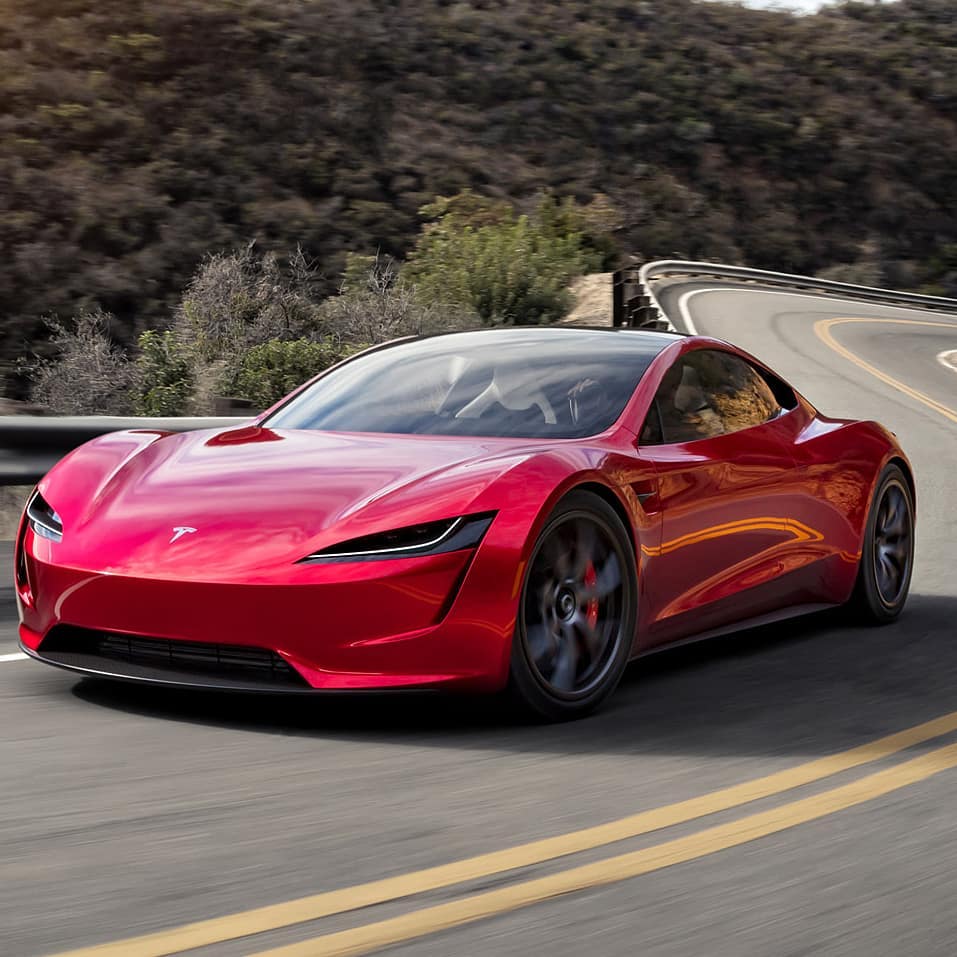
Tesla has tentatively scheduled its unveiling event for the Roadster’s next-generation iteration, and you will not believe the date the company picked for it.
Tesla CEO Elon Musk said during the 2025 Annual Shareholders Meeting that the company is aiming for an April 1 demo event.
Yes, April Fools’ Day.
🚨 Tesla’s unveiling event for the Roadster Gen 2 is scheduled for April 1, 2026.
Yes, April Fools’ Day. pic.twitter.com/sw09GUYFPV
— TESLARATI (@Teslarati) November 6, 2025
Tesla originally aimed for its “most epic demo” to take place at the end of this year. However, the writing on the wall as 2025 winds down seemed to indicate the company was not quite ready to show off everything it plans to implement into the Roadster.
Its capabilities have been teased quite heavily throughout most of the year, but the biggest hints came last week when Musk appeared on the Joe Rogan Experience Podcast.
He said:
“Whether it’s good or bad, it will be unforgettable. My friend Peter Thiel once reflected that the future was supposed to have flying cars, but we don’t have flying cars. I think if Peter wants a flying car, he should be able to buy one…I think it has a shot at being the most memorable product unveil ever. [It will be unveiled] hopefully before the end of the year. You know, we need to make sure that it works. This is some crazy technology in this car. Let’s just put it this way: if you took all the James Bond cars and combined them, it’s crazier than that.”
The Roadster has been somewhat of a letdown, at least in its newest version, thus far. Tesla has routinely delayed the project, putting those who put lofty down payments on the car in a weird limbo, lost at what to do.
One notable pre-orderer cancelled his reservation last week and got in a spat with Musk about it.
Now that there is a definitive date for the Roadster unveiling, Musk and Co. should have a more definitive cutoff date for features and capabilities. Chief Designer Franz von Holzhausen said earlier this year that when they showed Musk what they had done with the Roadster, the CEO encouraged them to do even more with it.
This delayed things further.
Musk also said he believes production would begin between 12 and 18 months after the unveiling, putting it out sometime in 2027.
Elon Musk
Tesla (TSLA) shareholders officially approve Elon Musk’s 2025 performance award
To earn his landmark pay package, Musk would be required to lift Tesla’s market capitalization from about $1.1 trillion today to $8.5 trillion over the next decade.
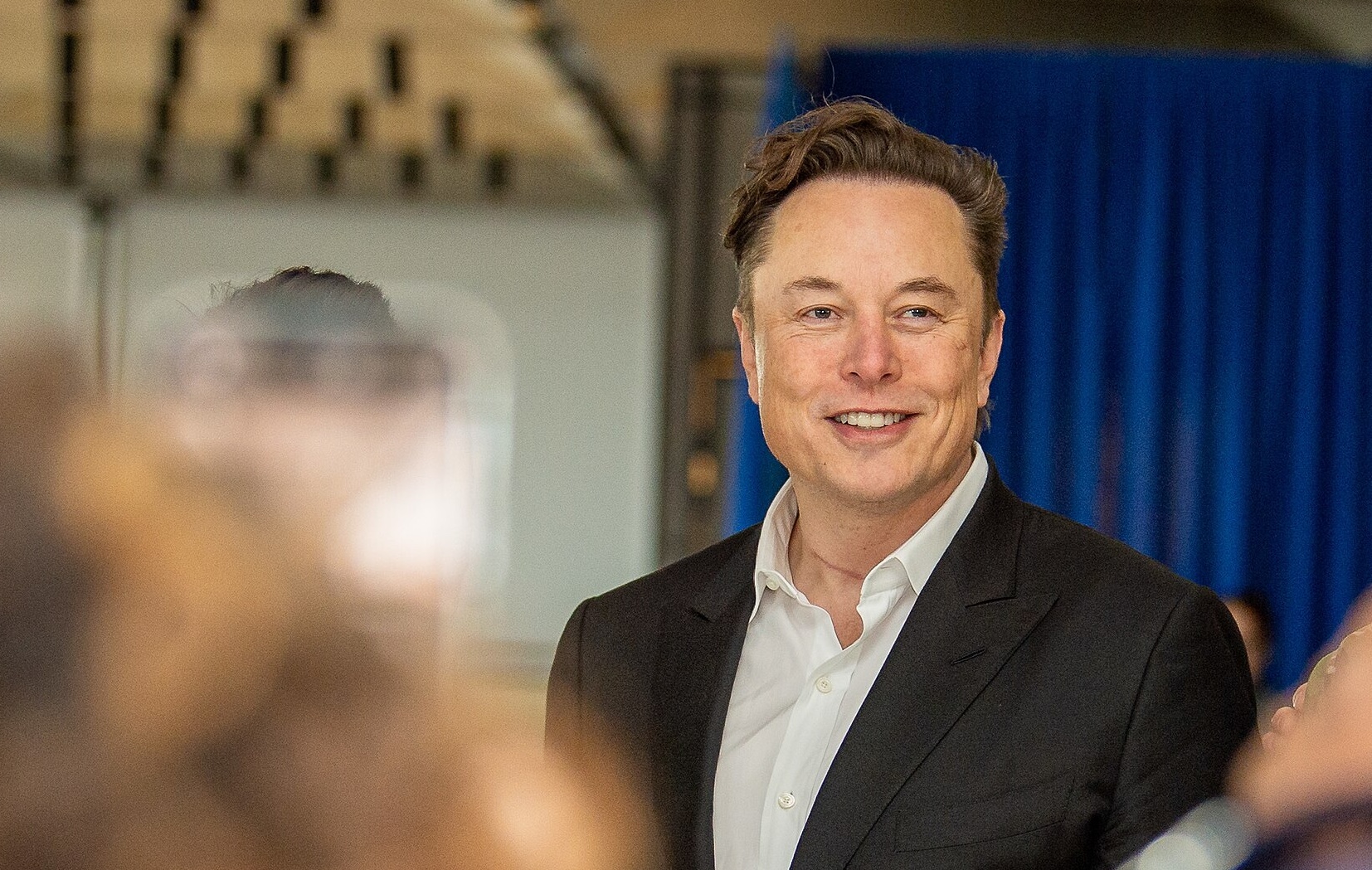
Tesla (NASDAQ:TSLA) CEO Elon Musk has officially approved his 2025 Performance Award, a landmark pay package that could make him the world’s first trillionaire and make Tesla the most valuable company in the world by a mile.
The 2025 CEO Performance Award was officially approved by Tesla shareholders at the 2025 Annual Shareholder Meeting.
Elon Musk‘s landmark pay package
As per Tesla, more than 75% of the shareholders approved Elon Musk’s 2025 CEO Performance Award. It was then unsurprising that the approval of Elon Musk’s pay plan received overwhelming applause from the event’s attendees.
The CEO took to the stage with much enthusiasm, welcoming every shareholder to the event and dancing briefly on stage. Optimus also danced on stage smoothly, demonstrating its improved movements to much appause.
Elon Musk’s 10-year targets
To earn his 2025 CEO Performance Award, Musk would be required to grow Tesla’s market capitalization from about $1.1 trillion today to $8.5 trillion over the next decade. At that level, Tesla would surpass every major public company in existence. The compensation plan also requires Tesla’s operating profit to grow from $17 billion last year to $400 billion annually.
Apart from leading Tesla to become the world’s biggest company in history, Musk is also required to hit several product targets for the electric vehicle maker. These include the delivery of 20 million Tesla vehicles cumulatively, 10 million active FSD subscriptions, 1 million Tesla bots delivered, and 1 million Robotaxis in operation.
Elon Musk
Tesla 2025 Annual Shareholder Meeting: How to watch
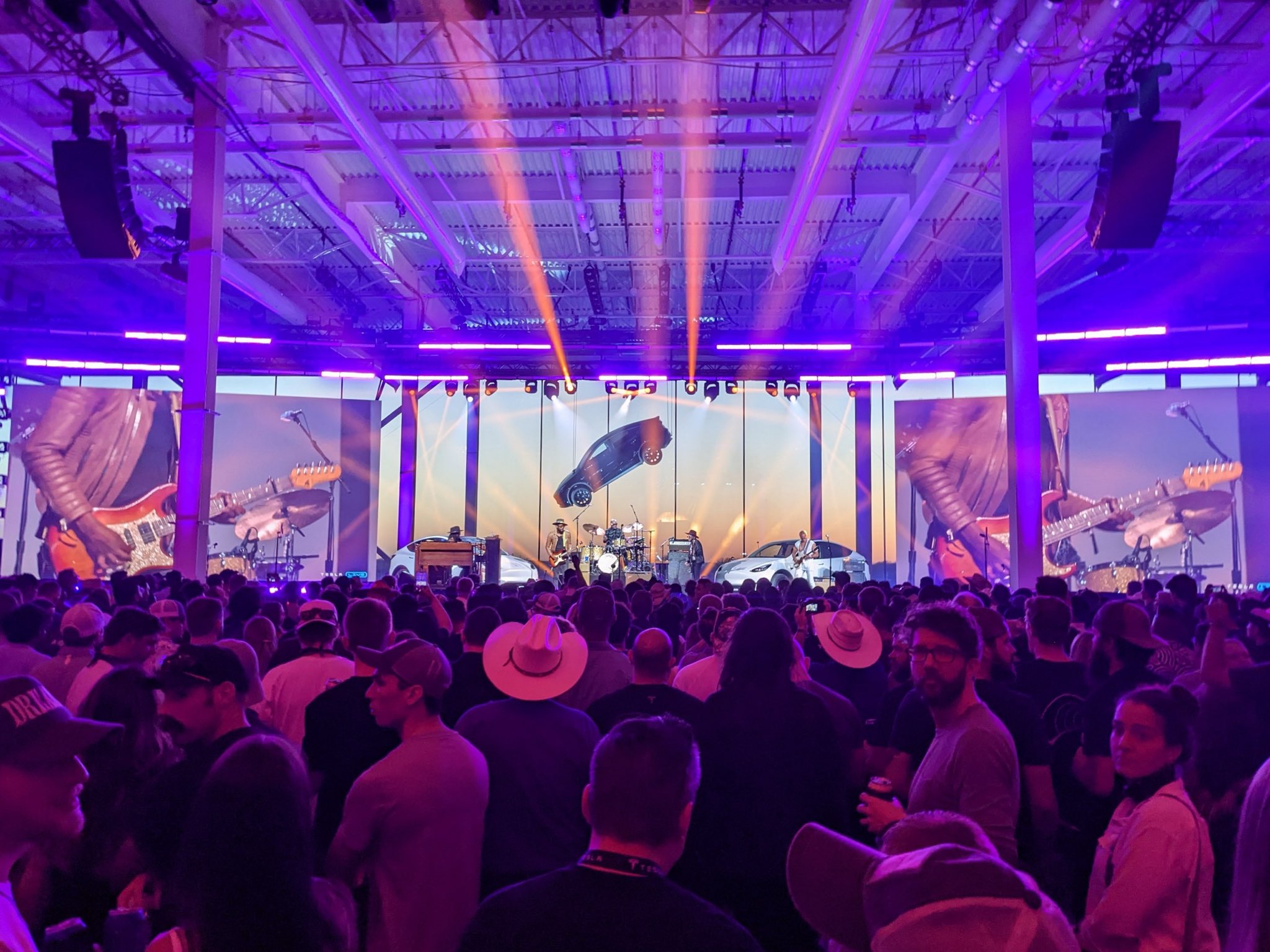
The 2025 Tesla Annual Shareholder Meeting from Gigafactory Texas is set to kick off at 4 p.m. EDT, 3 p.m. CDT.
The company will be having its typical presentation for the event, where CEO Elon Musk, along with other executives will discuss things like future products, the outlook of its self-driving development, potential releases for next year, and some current events within the company.
However, this year’s Shareholder Meeting has slightly more implications than others, as Investors and Shareholders have spent the last several months petitioning and supporting one of the proposals on the docket that could be the deciding factor in Musk staying or leaving Tesla.
Elon Musk’s new pay plan ties trillionaire status to Tesla’s $8.5 trillion valuation
Proposal four outlines a new compensation package for Musk that could give him $1 trillion in shares if he is able to complete a variety of lofty goals related to production, self-driving, and other important company projects.
Musk has said that he is truly after more influence on company decisions, especially as the Tesla Optimus program is ramping up and becoming a more relevant part of the company’s story.
The CEO said during the Q3 Earnings Call that he would not feel comfortable developing an “army of robots” if he did not have a comfortable amount of influence in some of the decisions. He could be voted our or out-influenced by what he calls “activist shareholders.”
One of those investors came after his past pay package, which was approved by shareholders not once, but twice. Musk still was not able to obtain the pay because of a Delaware Chancery Court ruling.
Nevertheless, this is one of the last ditch efforts Tesla is making to get Musk the compensation that he wants.
The meeting is set to kick off at 3 p.m. local time in Austin. You can watch it via the livestream on X:
Here is the link to Tesla’s 2025 Annual Shareholder Meeting:https://t.co/29dN4gkMWY
— TESLARATI (@Teslarati) November 6, 2025
-
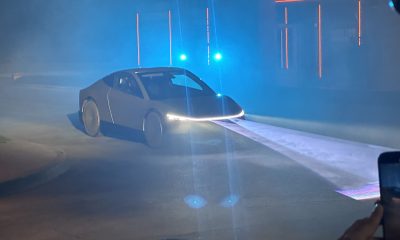
 News1 week ago
News1 week agoTesla Cybercab spotted testing on public roads for the first time
-
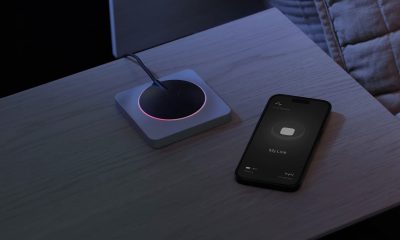
 Elon Musk6 days ago
Elon Musk6 days agoNeuralink’s first patient could receive an upgrade: Elon Musk
-
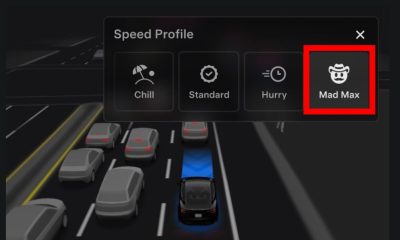
 News2 weeks ago
News2 weeks agoTesla ‘Mad Max’ gets its first bit of regulatory attention
-
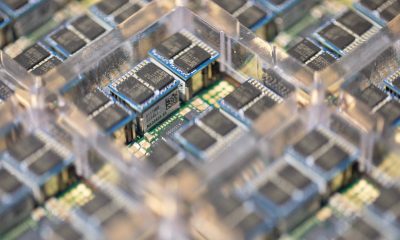
 News2 weeks ago
News2 weeks agoTesla reveals its plans for Hardware 3 owners who are eager for updates
-
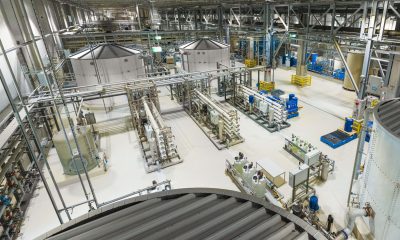
 News2 days ago
News2 days agoTesla Giga Berlin hits a sustainability milestone that’s so impressive, it sounds fake
-
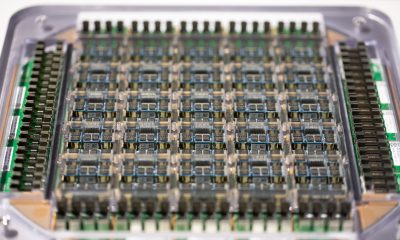
 News2 weeks ago
News2 weeks agoTesla shares AI5 chip’s ambitious production roadmap details
-

 News7 days ago
News7 days agoNeuralink’s first human patient reflects on 21 months with brain implant “Eve”
-
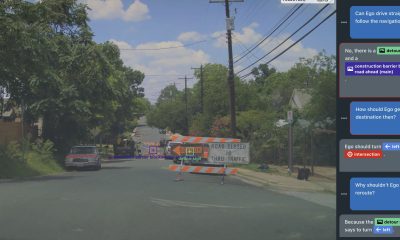
 News2 weeks ago
News2 weeks agoTesla VP explains why end-to-end AI is the future of self-driving

